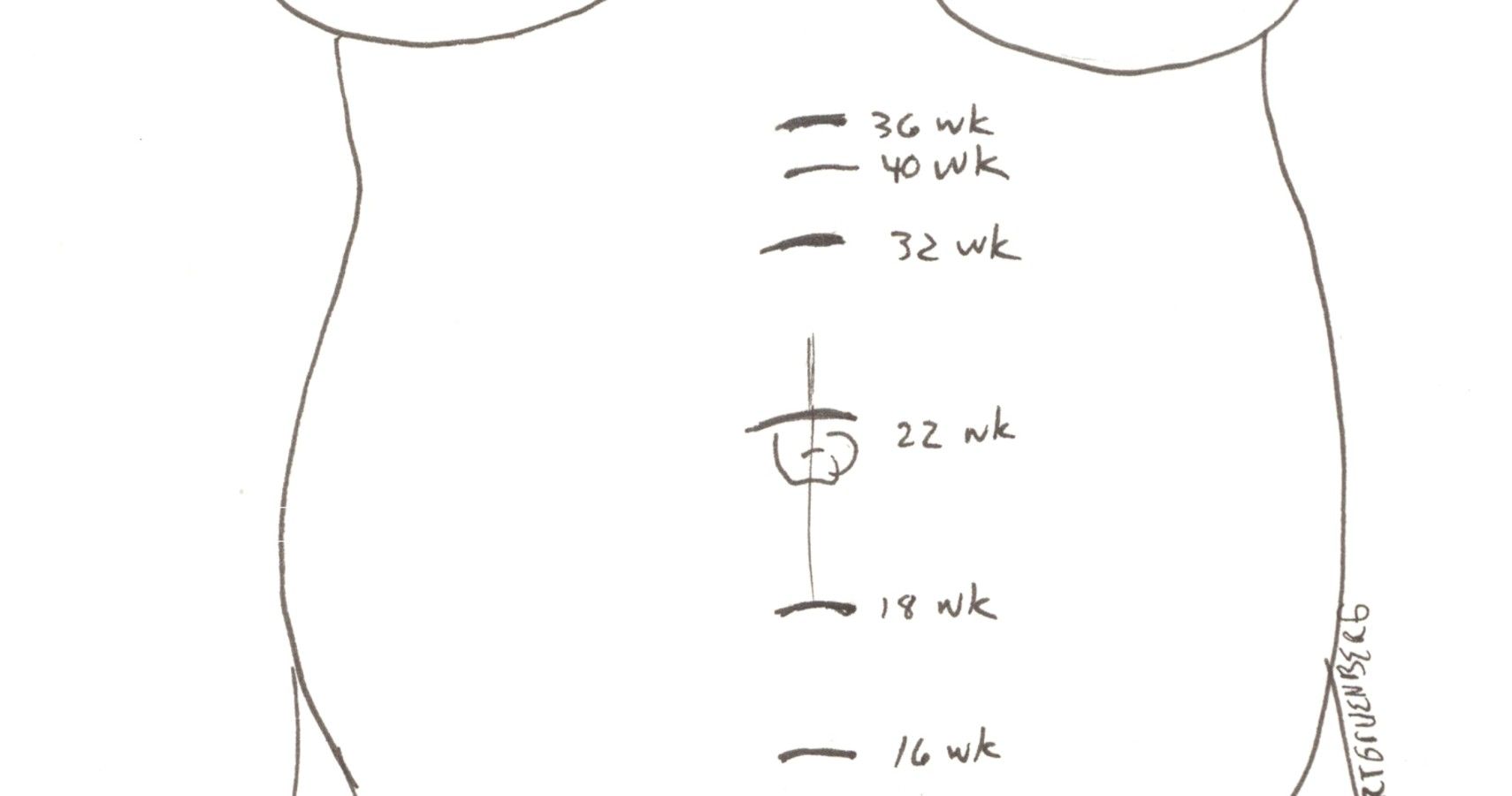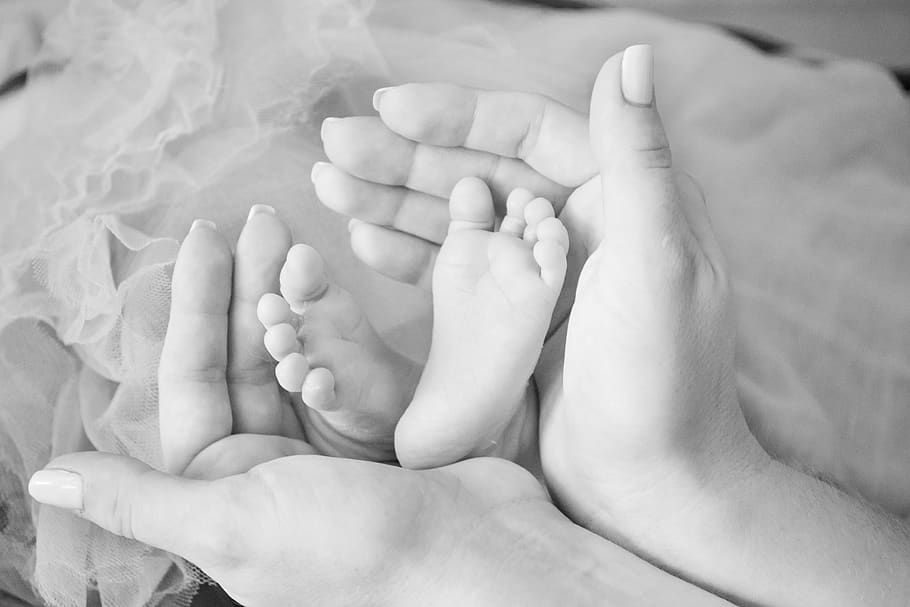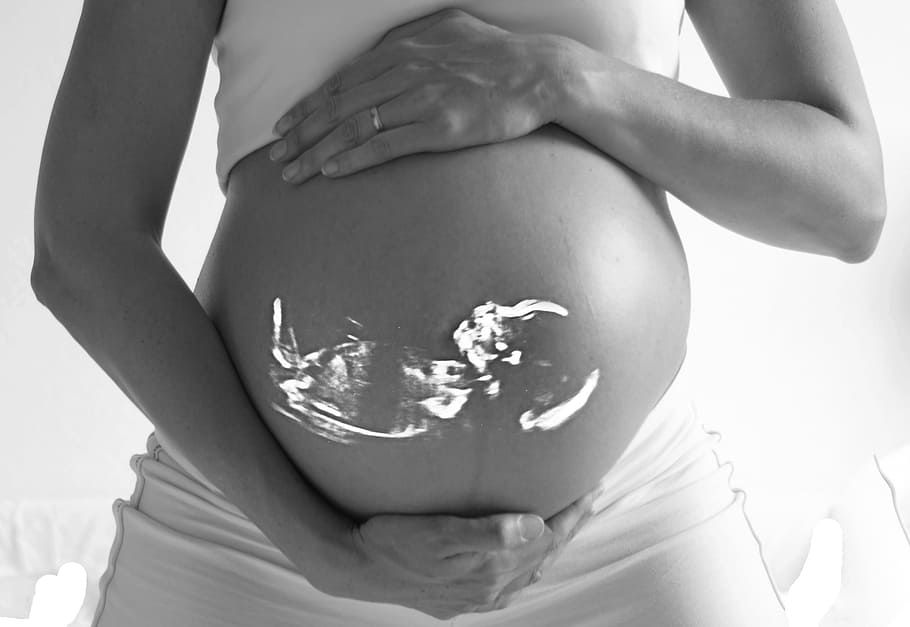This article was originally published on October 16, 2015. It was updated on November 9, 2020 by Ariane Signer.
When you find out that you are expecting a baby, so many life changes begin to take effect. These changes range from physical to emotional to financial, and sometimes can be a bit overwhelming!
Along with the excitement that comes with baby news, pregnant women are likely to feel an inherent sense of worry about the wellbeing of their growing baby.
Prioritizing your antenatal care will play a key role in keeping stress at bay. From about halfway into your pregnancy, you will be having more frequent visits with your obstetrician, gynecologist, or midwife who will monitor the size of your baby to make sure that they are growing and developing in a healthy manner. Many moms get very nervous if they notice baby measuring small on ultrasound, so proper screening and follow-up with your doctor is essential.
8 How To Measure The Baby
Measuring the baby's fundal height – the distance from the top of your pubic bone to the top of your uterus allows your OB/GYN to roughly assess the size of your uterus and the size, growth rate and positioning of your baby. The fundal height is measured in centimeters for most of your pregnancy. It should be roughly equal to the number of weeks of pregnancy, usually with a variation of one or two centimeters in either direction. So, at 20 weeks, your fundal height should be measuring at somewhere between 18-22 centimeters.
Is baby's fundal height measuring small? Your OB/GYN will be able to let you know during the ultrasound. This can be frightening and distressing for the woman, but measuring small or large doesn't automatically signal a problem with the baby's development. Since the introduction of ultrasound, the prediction of size has been more reliable and predictable, which giving a more accurate estimate of your due date. These measurements are compared to a fetal growth chart which will indicate if you are on track with normal measurements for your stage of pregnancy.
7 What Measuring ‘Small’ Can Mean
If your doctor indicates that you are measuring small, it simply means that your fundal height is smaller (considered to be more than 2 centimeters smaller) than expected for your stage of pregnancy when compared to that of an average pregnancy. There are few well known reasons for measuring small. Placental problems can cause a baby not to grow at the usual rate, especially if the fetus is not getting enough food and oxygen while in the womb. In rare cases, the placenta simply wears out and tends to stop working even before the fetus is able to grow in the womb. Smoking, drinking and/or drug abuse significantly increases the chances of having a small baby as they are the most common cause of poor fetal growth. It might also be caused by fetal problems due to some genetic abnormalities or an infection, the fetus may have poor growth and so the problem could be with the fetus itself. Even having less amniotic fluid causes slow growth. If a mom-to-be has not been eating well, poor nutrition can affect your baby’s growth. Excessive exercise or dieting can also affect the baby’s nutrition causing the baby to be small.
The age of the mother could have some bearing on the growth of the fetus, especially in cases where the mother is under 18 or over 35, then they’re most likely to have a small baby. Statistics show that women who previously had a small baby have a higher chance of conceiving another small baby.
6 Steps To Be Taken With A Smaller Than Average Baby
Your OB/GYN or midwife can conduct an investigation to make sure all is well with the fetus and that the baby is growing at a healthy rate. For that, an ultrasound can be conducted to find out the accurate due date and to identify any possible causes for the small measurements. A rescan can be scheduled in a couple of weeks to oversee the cause and monitor the baby’s growth during that time if the first ultrasound scan measured the baby as small. This can also rule out problems like low amniotic fluid or intrauterine growth restriction. Smaller than average babies get special treatment in utero. A Doppler Ultrasound may also be suggested to measure the heartbeats of the baby and to see if the blood flow through the placenta and the umbilical cord is working fine. Frequent monitoring is usually required to assess the well-being of your baby.
5 What A Large Measuring Baby Means
Should the measurements read large, it simply means that your fundal height is 2 centimeters or more than expected for your stage of pregnancy compared to the average pregnancy. An ultrasound scan can give better measurements of the baby. If the scan shows that your baby is large, then your OB/GYN or midwife will look for uterine fibroids or may want to monitor your blood sugar levels to see if you’re developing gestational diabetes or have pre-existing diabetes. The baby’s measurements could be related to a high body mass index (BMI) at the start of the pregnancy. Gaining a lot of weight between pregnancies or having not lost weight from a previous pregnancy or gaining a lot of weight during this present pregnancy can cause larger babies. If the abdominal and uterine muscles are more relaxed, then the bump can be mistaken for a larger baby. Having too much of amniotic fluid contributes to larger babies, or maybe the due date is wrong or it’s been more than two weeks past the due date resulting in a larger baby. If the bump shows earlier on in the pregnancy, then there are strong chances of carrying twins. In the case of a breech baby or if there’s placenta previa present (it happens when the placenta is lying unusually low in your uterus, next to or covering your cervix) then the fetus will measure large. On the other hand, it may be possible that it’s just a perfectly healthy baby.
4 Does Size Really Matter?
It’s common to see women measuring large as they’re nearing their delivery date or are at the end of their pregnancy, as even a slight difference in size becomes more prominent and well-defined. No matter what stage of pregnancy, further investigations and scans can confirm due dates and check for twins or the presence of uterine fibroids. As long as your baby is measuring consistently a week or two ahead or behind, it's neither a matter of concern, nor does it imply that your due date is going to be affected. In all probability, the baby seems to be growing and developing just as any other baby would be and the disparity can sometimes be pinned down only when compared to average pregnancies. If the obstetrician or midwife decides to further investigate or scan, they are generally doing so in a precautionary way, not because something is wrong. The best thing to do is to stay calm, look after yourself, eat well, and get plenty of rest.
3 Why You Shouldn't Worry About The Size
Women who are at the same stage of pregnancy may sport bumps in a range of shapes and sizes. More often, the size of the bump, either large or small, is related to the body type of the mom-to-be, and not the babies growth patterns. In fact, size is usually affected by genetics, and will vary depending on how tall or short your parents are. Race and ethnicity also does play its role. Previous pregnancies causes the abdominal and uterine muscles to become more relaxed and less tight, this may cause the bump to show earlier, maybe comparatively bigger, earlier on in the pregnancy. Maternity clothes could make all the difference in appearance and that of the bump. Certain clothes may make the bump look bigger than others. The number of babies being carried and the positioning of babies in the uterus makes a big difference in the appearance of the bump size. A bump may appear smaller when the baby is tucked in close to the spine and larger when the baby stretches out. And some women have more amniotic fluid than others. This could make the bump appear much bigger or smaller. Even the baby's sex can make a difference: it's generally believed that carrying a boy in the womb makes the bump appear larger than carrying a girl in the womb.
2 When Should You Worry About Your Baby’s Measurements?
The following things might be reason to be concerned:
- Timeline: baby measuring 2 weeks behind
- Medical Advice: your OB/GYN specifically says that he is worried
- Concerning Measurement: baby measuring small at 20 weeks
- Falling Behind Constantly: your baby is measuring further and further behind each time you go for your antenatal check-up, then this could mean that your baby has stopped growing. It means your baby has been diagnosed with Intrauterine Growth Restriction(IUGR) — specifically, if an ultrasound indicates that their weight is below the 10h percentile for their gestational age
- Other Reasons: your OB/GYN may consider for a further rescan in scenarios including oligohydramnios (too little amniotic fluid), polyhydramnios (too much amniotic fluid) or when your doctor suspects that your baby might be in a position such as breech or transverse
1 Will Having A Large Or Small Baby Affect The Birth?
Giving birth vaginally to a large baby might be challenging, but it's definitely not impossible. An assisted birth will often required. Almost two thirds of large babies (4.5 kg or more) are born vaginally. Complications like an increased risk of heavy blood loss after the birth and severe perineal tearing are most likely to occur.
Rarely, a serious situation can occur if the baby weighs over 5 kg. There's a one in 13 to one in 7 chance of large babies experiencing ‘shoulder dystocia’ during birth. Shoulder dystocia happens when the shoulder of the baby gets stuck while pushing his head out. There is a possibility that the doctor will recommended an early induction or schedule a caesarean if the baby is large, especially if the baby has been diagnosed as diabetic. Labor and birth can be traumatic for smaller babies. Doctors may advise a more managed delivery, such as a caesarean. Some small babies may require a special care baby unit so that they can grow healthily and thrive better.
Whether the baby is small or large, chances are much higher that the scheduled due date is maintained, without medically inducing. And whatever the weight of the baby, getting to finally hold your baby will definitely be amazing and thrilling moment.
SOURCES: Baby & Bump, Baby Center , Baby Med









